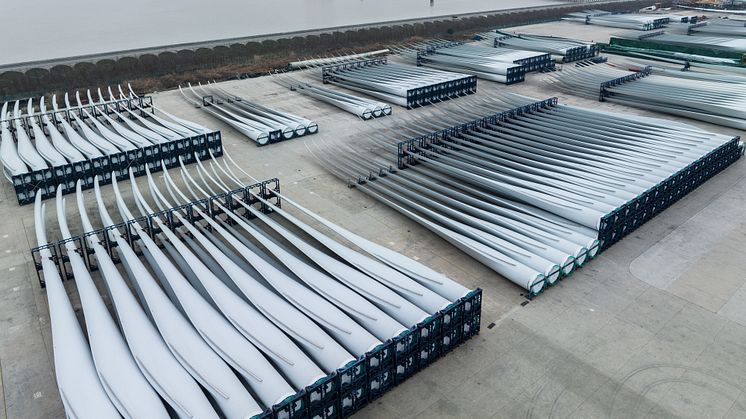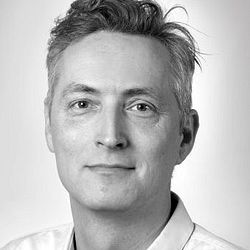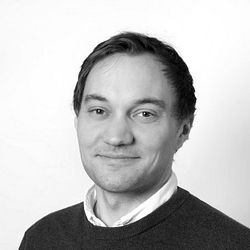
Pressemeddelelse -
"We will be able to produce more energy with fewer materials"
Innovation project funded by EUDP is exploring the possibilities of a reduction of weight in wind turbine blades, which can potentially take the production to the next level and reduce the price.
A modern wind turbine blade is a technological triumph.
A sandwich of glass fibres and carbon fibres, balsa wood or PET-foam and resin designed with the sole purpose of obtaining the optimal combination of strength and weight, so that longer blades can be built with fewest possible resources, and wind power can be utilised as much as possible.
Recent years' development has extended the blades’ length beyond 100 metres. As a result, wind turbine blade manufacturers face several significant challenges:
The blade mass must be further reduced, development time shortened, and productivity increased.
Therefore, optimisation of the core material becomes a prerequisite for designing blades that are lighter and thereby can be made longer for the next generations to come of megaturbines.
The weight is the starting point for the EUDP-funded innovation project OptiCore Platform where a number of partners in collaboration with Energy Cluster Denmark are working on optimising the mass, the resin flow, and the mechanical properties of the core material in the blades.
"Longer blades are a tendency in the industry today. Therefore, we need to reduce the weight," says Sergio Gutiérrez Coronil, Blade Materials Engineer at Siemens Gamesa Renewable Energy.
More efficient and sustainable
The goal is to develop a design software for core material that can optimise resin flow, mechanical properties and the weight of the core material based on the local geometry and materials of the blade.
These parameters – and the production costs – are all interdependent, whereby exploring the solution frame for core material is very complex.
Therefore, the goal is to develop an algorithm for optimisation that can quickly explore the solution frame based on the blade manufacturer's design goals.
"Today, we work with different materials which have good and bad properties in relation to being distributed in the blade," says Adrian Dibbern, Materials Engineer at Nordex Energy:
"The goal is to save the amount of resin, so we get a blade that is more efficient, sustainable and recyclable."
The starting point for the project is the modern design processes for wind turbine blades. By focusing on an optimised flow pattern of resin through the core material, we can reduce the development time and weight of blade structures, risk of reduced material properties and greater resource consumption for prototypes.
Benefits the entire value chain
According to Jon Spangenberg, Associate Professor at DTU Civil and Mechanical Engineering, understanding and optimizing resin flow is paramount in the quest for efficient and sustainable wind turbine blades:
"Resin flow optimization is at the core of our investigation, ensuring every drop counts for a greener future with lighter, stronger blades, supporting our goal of producing more energy with fewer resources," he states.
The project seeks to build a platform that will be able to reduce resource consumption and costs for blade production and thereby significantly improve competitiveness. According to Simon M. Kristoffersen, System and Process Expert at Gurit, the solution will especially make it possible to build even more sustainable blades:
"We will be able to produce more energy with fewer materials. This will benefit the production across the supply chain for the production of wind turbine blades," he says.
Rob Pierce, Senior Researcher at DTU Wind and Energy Systems, emphasises that even small improvements are of great importance.
"As the blades get bigger, the importance of reducing the weight increases. Every percent we can save in weight has a huge impact on the opportunity to lengthen the blade and increase the energy output. The lighter, the more efficient," he says.
It is expected that a successful OptiCore Platform project will enable a shorter production time and less material consumption in the design phase, and that the reduced blade weight will enable 2% longer blades corresponding to 4% increased rotor area and thereby increased energy production.
"By fully integrating the OptiCore Platform, the expected effect is better competitiveness in terms of reduced blade costs and an overall reduced LCOE for wind energy. There is potential in this," says Anne Bjerre Hammer, Project Manager at Energy Cluster Denmark.
Related links
Emner
Kategorier
Regions
Sammen gør vi Danmark til grøn førernation for innovative og globale energiløsninger.


